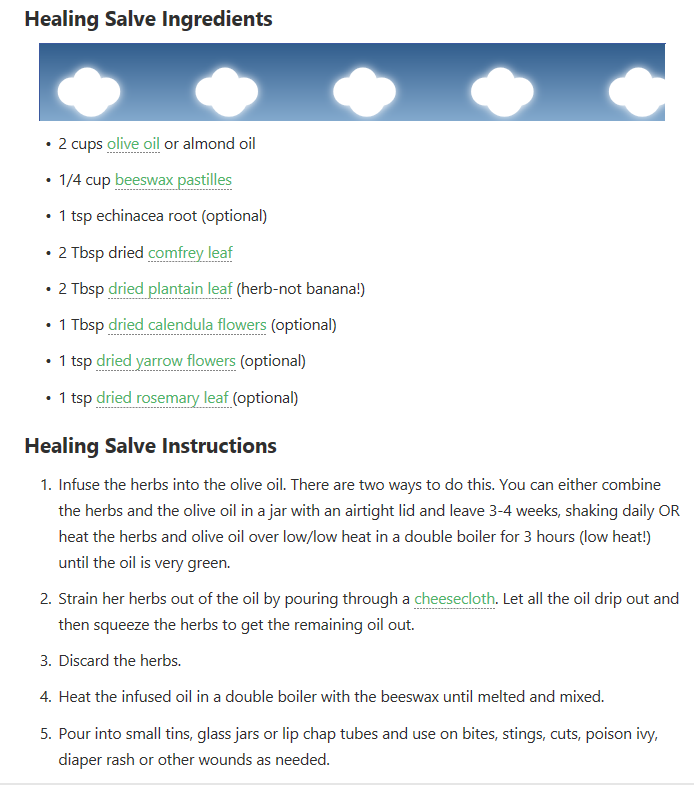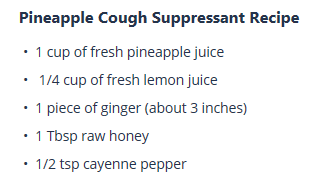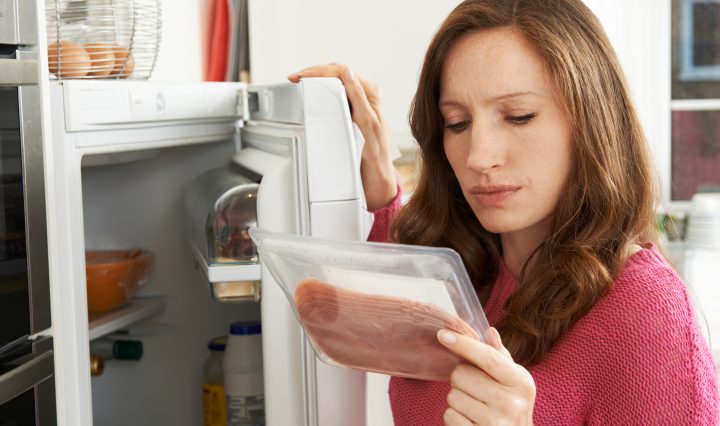People who follow strictly conventional advice often scoff at vitamins and herbs as medicine for illnesses or prevention of disease even though the science is overwhelmingly positive and vastly outnumbers pharmaceutical research for effective treatment of common illnesses. I also find that genetics becomes the scapegoat when parents or conventional doctors don’t have answers or can’t admit blame. Maybe if it didn’t take an average of 17 years for new science to make its way into conventional education, they would know that this explanation is no longer all that viable. It’s also important to note that conventional doctors’ education is centered around pharmaceuticals with very little education in lifestyle preventions and none in natural treatments. For my family, we use conventional doctors for urgent care needs like acute trauma and also when immediate symptom relief is warranted. Otherwise, we use natural methods paired with a strong lifestyle approach to keep us healthy and disease-free.
As parents, we tend to overreact to illness and over-sanitize our children’s environments. With very young babies, this might be warranted especially, if you’re mostly formula feeding. Breastfeeding will supply the baby with antigens from mama as well as feed the gut microbiome which builds the foundation of our immune system. Since mama and baby share the same environment, the right antigens will be supplied to protect the infant. The older children get and the stronger their own immune systems become, the more we need to relax and understand that early exposure is essential to training and building the immune system. If you keep up with the latest health and wellness science, you likely understand that germ theory has largely been replaced with the hygiene hypothesis or “old friends” theory. Simply put, over-sanitizing our children’s environment with constant hand washing, sanitizer use, and quarantine measures can actually be more harmful in the long run than the illness we are trying to avoid. Instead of focusing on the external environment (which you have less control over), focus on the internal environment (i.e., building, supporting, and enhancing the immune system). Our bodies are designed to heal and they’re incredibly good at it if given the right conditions to work under.
We build our daughter’s immune system by managing what goes in and on our daughter’s body. We provide her with targeted nutrient-dense, whole organic foods and we avoid toxins that can hinder and suppress immune function by ensuring she has clean water, clean air, clean food, clean skin products, etc.. Our philosophy extends to the use of pharmaceuticals which often contain toxic ingredients or health deteriorating domino effects (like antibiotics) and is, thus, what brought to life this natural healing and first aid kit. When the time for intervention comes, it’s good to be prepared with products on hand that won’t interrupt the immune system process (like Tylenol) or cause side effects (pretty much any manufactured, synthetic “remedy”). For all the skeptics out there who subscribe to the patent-based medicine model or science-by-proclamation model, just try a natural remedy first. You can always reach for your Rx or OTC medication if it doesn’t work. “Seeing is believing” can be a powerful principle to help you shift your paradigm of health. However, with that in mind, a word to the wise: being healthy isn’t about magic bullets. There are some powerful compounds in nature that come close to this but health is built from the ground up. Your foundation of health will determine your susceptibility and reaction to viruses and bacteria. Before you build your natural medicine cabinet, it’s important to have some fundamentals down. Aside from clean water, clean food, exercise, and quality sleep (yes, all are needed for an optimal immune system!) below are some of the targeted components to ensuring a healthy immune system. These can have immediate, acute effects on the immune system while the others mentioned are the building blocks needed for a healthy life in general. While I’ll only highlight a study or two, the science is vast. Simply searching “vitamin C and the immune system” in PubMed returns 2,717 results.
Fundamental #1: Vitamin D
It’s estimated that around 70% of U.S. children ages 1-21 are deficient or insufficient in vitamin D.¹ If you do nothing else to support your immune system, vitamin D supplementation is the single most impactful.
Fundamental #2: Vitamin C
For more on home-made, natural medicine, I love the information presented by The Grow Network.
Natural Healing Kit
For wounds:
Disinfect: Only use hydrogen peroxide when cut occurred in a very dirty area (like while swimming in a lake). Otherwise, it will also kill the good bacteria. It’s best to use cayenne pepper, manuka honey, colloidal silver or oregano oil. Apply directly to open wound.
Stop bleeding: Yarrow powder was used in WWII and can be used topically to staunch bleeding. Cayenne pepper powder will also stop the bleeding (bonus – it’s probably already in your spice cabinet).
Seal: If the bone is showing, it’s best to go to the doctor for stitches. If it appears to just be the skin, use superglue to seal the wound and/or butterfly bandages to hold it together while it heals.
For pain: arnica used topically and/or orally. Not for use on open cuts. Topical works great for bruises, stubbed toes, sore muscles, etc. I also like this product, called The Pain Stick.
For poisoning:
Take to the hospital immediately if batteries or magnets are swallowed. Activated charcoal (include dosing for body weight) should be taken immediately as well as calling poison control 1-800-222-1222. A trip to the hospital for a stomach pump may still be warranted.
For upset stomach and/or vomiting:
If food poisoning or exposure to E.coli or salmonella is suspected, taking raw garlic at the earliest signs (preferably before vomiting sets in) can dramatically improve the symptoms because garlic is a powerful antimicrobial. You can buy the capsules or simply chop 1 clove of raw garlic, add it to a few ounces of water, and down it like a shot three times daily. I do this periodically for immune support but if an illness is suspected, I do 2-3 cloves of garlic three times daily and continue for 1-2 days after symptoms have disappeared. Make sure to take your garlic with food. Raw, unfiltered apple cider vinegar is also effective at combating indigestion, upset stomach, nausea, etc. Take 1 tsp. in 8 oz. of water every hour until symptoms subside. Ginger is also a great remedy for upset stomach, motion sickness, and/or nausea. For my daughter, I brew a tea with fresh ginger and add high-quality manuka honey for her to sip on. You can also take the essential oil orally, make capsules out of it, or purchase ginger capsules or lozenges. If you have a small child that’s unwilling to eat anything, they may still suck on one of these individual manuka honey packets. I personally love these for my emergency and travel kits. “The healing property of honey is due to the fact that it offers antibacterial activity, maintains a moist wound condition, and its high viscosity helps to provide a protective barrier to prevent infection…The medical grade honeys have potent in vitro bactericidal activity against antibiotic-resistant bacteria causing several life-threatening infections to humans.” – https://www.ncbi.nlm.nih.gov/pmc/articles/PMC3609166/
For sunburns:
Fresh Aloe Vera should be applied topically. I mix it with a little bit of lavender essential oil for added
benefit. I highly recommend keeping an aloe plant in your home. They’re low maintenance and can be used for a variety of things. Vitamin E applied topically is also effective in promoting healing after a sunburn. I travel with this first aid ointment if I plan on getting some sun. Plus, it’s great for bug bites, rashes, etc. I’ve also heard of yogurt being effective when applied topically (if nothing else, it’ll be soothing since it’s cold).
For poisonous snake and/or spider bites:
Applying a poultice is a powerful tool. A poultice is a moist mass of material applied directly to an infection site and held in place with some kind of bandage or cloth. Fresh plant material should be ground using a mortar and pestle. The applied product should represent a paste and you should have enough to cover about twice the size of the infected area. Keep a poultice on for at least 6 hours and up to 12 hours. Repeat with a fresh poultice as needed. An overnight poultice is an easy way to meet the time criteria. All of the following work well for a snake or spider bites: activated charcoal poultice (mix it with a bit of water to get it moist) or a combination of comfrey and plantain poultice.
For other insect bites:
A poultice of plantain leaf can lead to quick inflammation and pain reduction. If you’ve got it growing in your yard, simply chew it up and apply to the bite/sting. There’s also a wonderful recipe I snagged from Wellness Mama that she calls homemade Neosporin. This can be used for cuts, scrapes, insect bites, diaper rash, poison ivy, bruises, etc. Here’s the recipe:

For colds and/or flu symptoms:
If you’re getting sick, do you know your vitamin D levels? They’re probably not high enough! Remember to supplement.
At the earliest signs of flu or cold, one of the most powerful, research-backed remedies you can use is vitamin C. Use a whole food source, not just ascorbic acid. I use Garden of Life Raw Vitamin C capsules and Vitamin C spray. The spray isn’t as potent and is really only reserved for my daughter (who loves the orange flavor) in cases of minor symptoms. Otherwise, I break open the capsules and add it to a smoothie so my daughter will consume it. My Naturopath advised that I give my daughter 1,000 mg daily at the onset of cold and flu symptoms. I find that I typically need much less to help alleviate her symptoms but if you know it’s likely the flu that’s been going around, opt for the 1,000 mg. Other things I add to the smoothie are Vitamin D (whole food source, not cholecalciferol). See my post on smoothies for more ingredients and their intended benefits so you create the healthiest smoothie possible while you’re at it. Note: avoid sugar! Sugar consumption during illness will prolong it as it weakens the immune system.
I also use elderberry syrup and/or lozenges with added zinc at the onset of symptoms. This study found that the use of elderberry syrup shortened the duration of influenza by four days compared to the placebo group. An elderberry tincture or syrup is easy to make on your own or you can purchase them. I like these lozenges since they also include zinc (a vital trace element for optimal immune function). The downside is that the elderberry remedies (unless using a tincture) contain sugar. Immune impairment corresponds to the amount of sugar intake. Therefore, if you’re watching the rest of your diet, the impact of sugar in elderberry syrup and lozenges should be negligible compared to the benefits. Another remedy proven to be effective in reducing flu symptoms and duration is the homeopathic remedy Oscillococcinum. They’re completely harmless and are usually easy to get kids to take because they taste like tiny balls of sugar.
Sore throat: slippery elm lozenges are great for sore throat relief. Honey and ginger tea is also great for sore throat relief. Adding some fresh lemon to your tea will give you an additional benefit.
Congestion: diluted eucalyptus essential oil applied topically to feet and chest will help. Diffusing is also a good idea. Especially, while sleeping. A netti pot with saline solution is also a must!
Cough: raw pineapple juice contains bromelain, a powerful cough suppressant. Bromelain works on many fronts with antiviral, anti-inflammatory, and antibacterial properties. Herbal tea with honey also works well.

For rashes:
Aloe Vera, Vitamin E, olive oil and baking soda mixed together, and oatmeal can all be effective in alleviated rashes. Try to encourage your child not to itch the rash. These remedies can also help alleviate itching.
For pinkeye:
Apply dry chamomile leaves to the eye and secure with a bandage. Keep on eye for 15 minutes every hour. Pink eye will clear up rapidly (in about three hours).
For ear infections:
Use garlic oil. It’s a natural antibiotic (I’m begging you – please refrain from systemic antibiotics for ear infections – they’ll only destroy the gut microbiome and, therefore, deteriorate overall health and likely will not have an effect on the ear infection because they’re typically viral). If they are bacterial, topical use will work great. I use this brand of garlic drops from Herb Pharm but you can also make your own by crushing up garlic and letting it sit in warm organic extra virgin olive oil for a few minutes to a few hours (longer will be more potent). Then strain the garlic from the oil and apply a few drops inside the ear canal.
UTIs:
Cranberry works wonders but not the juice you buy at the store which is likely pasteurized (destroys the beneficial properties) and is chock-full of sugar. Use fresh cranberry’s or you can buys products such as Lady Somas Cranberry pills.
For headaches:
Peppermint oil applied topically behind the ears, back of the neck, on the temples (just a tiny bit so it doesn’t get in your eyes!), and/or on the forehead can work wonders. Also, using it aromatically by diffusing it our rubbing it in your hands and then inhaling deeply as you cup your hands over your nose and mouth can help significantly.
Applying pressure on the webbing between the thumb and pointer finger can also help.
Turmeric capsules can help if the headache is inflammation based. Oral arnica is also a good resource.
For menstrual cramps:
A drop or two of clary sage with some carrier oil applied topically to lower belly. A heating pad and regular use of magnesium before the onset can help reduce cramps too. I personally love my heat pad. An Epsom salt bath during cramps is also helpful. Adding ginger essential oil or powder to the bath can increase benefit.
A note on fevers: fevers are the body’s natural defense against pathogenic invaders. They’re designed to create an environment that is inhospitable to the foreign invaders. Intervention is rarely needed and bringing down the fever with the use of Tylenol, Aleve, etc. can prolong the illness. At least a dozen studies have confirmed this. If you’re worried about febrile seizures, treatment might make more sense but there are also homeopathic remedies that work well like Belladonna or Stramonium. Peppermint oil rubbed on the bottoms of the feet on children over 3 can also work well. Fevers are scary for parents, I get it. However, fevers are rarely dangerous. To cause brain damage, a fever will have to reach over 107°+. This is a good podcast episode to listen in on between Wellness Mama and holistic Pediatrician, Dr. Elisa Song. Dr. Song makes the following statements, “Fever phobia is rampant not just among parents but practitioners. Most physicians, nurses, and healthcare practitioners don’t really understand what it is and what it does for the body.” Dr. Song wrote an eBook for just this reason. Get her free eBook on fevers here.
Young baby treatments:
For an upset stomach, gar, or suspected cholic: Use organic fennel seeds (fenugreek) to brew tea for baby. Add concentrated tea to bottle or use a medicinal dropper. The mom can also drink the tea to help aid in lactation.
For teething, I used a Baltic amber necklace and chamomilla homeopathic medicine. While she was still irritable, her level of comfort seemed very manageable. For more on safe baby products and treatments, see an earlier post here.
Note: always consult with your doctor before use especially if pregnant or using on young children. This is for informational purposes only.
1.https://www.ncbi.nlm.nih.gov/pmc/articles/PMC3749840/
2.https://www.ncbi.nlm.nih.gov/pmc/articles/PMC3166406/#!po=1.38889
3.https://www.ncbi.nlm.nih.gov/m/pubmed/29099763/
Join our list
Subscribe to our mailing list and get interesting stuff and updates to your email inbox.




